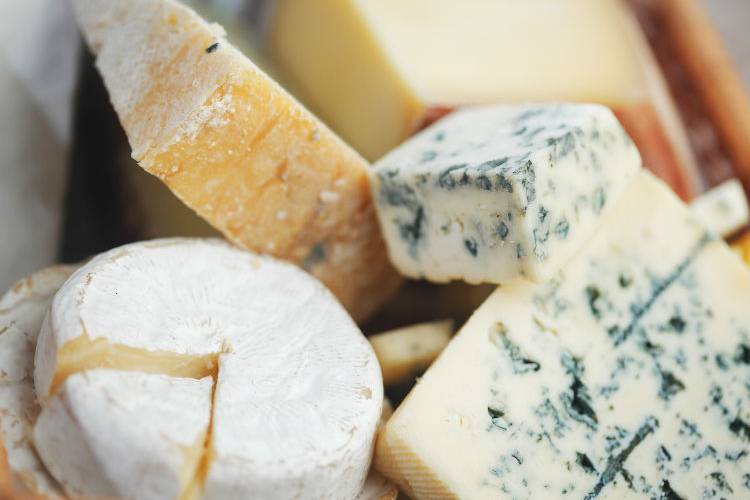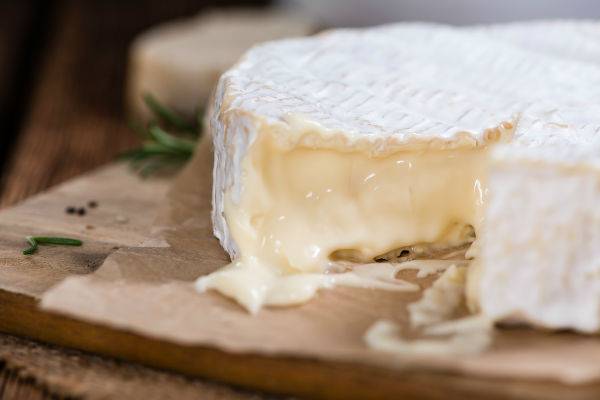Cheese…That’s what we do
Whether it is from cow’s milk, sheep’s milk, whether it is made with rosemary or with oil… There are more than 2,000 different types of cheese in the world. Each has its own uniqueness that sets it apart from the rest. Let’s get to know this delicious product a little better.
fresh food
Share

Cheese is one of the pillars of the Mediterranean diet. According to the UnitedNations Organisation for Food and Agriculture, 18 million tons of cheese is produced throughout the world each year. Europe is the continent with the greatest tradition and the largest variety of cheeses. The European Union has established a geographical indicator of quality with the aim of protecting and promoting the creation of artisan cheeses: the Protected Designation of Origin (D.O.P.) in addition to the Protected Geographical Indication (PGI).
Nutritional Attributes
Cheese shares many of its properties with milk, although it contains more saturated fats, which make it a food that should be eaten in moderation if you suffer from any type of cardiovascular disease. As cheese contains a smaller amount of lactose, it aids digestion. It also has a high calcium content and contains vitamins A, D, B12 and B2.
A Country with the Designation of Origin
Spain produces almost 400.000 tons of cheese per year, mainly from ewes, goats and cows. It is one of the most valued products in our gastronomy. So much so, that we have over 150 varieties of cheese, 32 of which have Protected Designation of Origin (D.O.P.) status. The climate and the orographic diversity of our territory are the main reasons that we can enjoy such different cheeses.

Almost all of the autonomous regions within Spain have their own P.D.O. cheeses. Some of the best known include:
• Manchego: from the Castilla-La Mancha region. It is made exclusively from the milk of Manchego sheep. Excellent for pairing with wine from the same region.
• Torta del Casar: this cheese comes from the Extramadura region and it comes from raw sheep cheese. It has a particularly creamy texture.
• Tetilla: is made in Galicia. It is perfect for savoury aperitifs, snacks or canapés. It has a unique shape.
• Cabrales: a blue cheese made from raw cow’s milk or a mixture of two or three types of milk: cow, goat or ewe. It comes from Asturias.
• Idiazábal: is made exclusively from the milk of Latzxa and Carranza sheep. It comes from the Basque Country and Navarra, it is a relatively fatty and strong cheese.
• Mahón: can be found on the island of Menorca. It is made with cow’s milk. It pairs perfectly with a young red wine.
• Tronchón: this cheese has its origins in the Aragon, in the province of Homónima. is known for its unique shape: it looks like an egg with a volcano on both sides; and it has a typical drawing of a flower on the crust.
• De ‘Cassoleta’: this particular cheese does not have a protected designation. It is a soft cheese made from cow, sheep or goat’s milk. People love it. It got its name because of its volcano-like shape, which it gets from the mould used to manufacture it. It is from the Valencia region.
International Flavour
In Italian gastronomy, cheese is practically considered a national heritage. It is one of the main cheese producing, exporting and consuming countries in the world. Among its varieties, it can boast of having the best-known cheese in the world: mozzarella. Although parmesan and provolone are also of note among its more than 450 international cheeses.
The French do not fall short either. If they chose to, they could eat a different cheese every day of the year, as it is calculated that they produce some 400 varieties. One of the best known is Roquefort, made with ewe’s milk. Among its many cheeses, Camembert and Brie are some of the most well-known.
In Switzerland, cheese also has an important place within their gastronomy. The country has almost 400 varieties of cheese, among which Emmental and Gruyere are notable.
The Greeks believe that cheese is an essential part of their daily diet. It has been calculated that an inhabitant of Greece will eat an average of 27.3 kg of cheese in a year, 40% of which is Feta cheese; a «rindless» white cheese made with goat’s and ewe’s milk and cured in brine.






